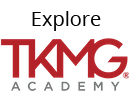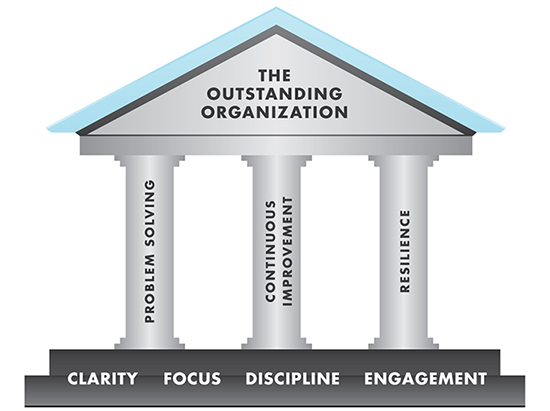

Any leader or skilled improvement professional knows that metrics are necessary to define what success looks like, measure progress toward a defined target, and assess performance against defined standards. Metrics also serve as a powerful way to demonstrate improvement success to people who might otherwise roll their eyes.
Used properly, relevant metrics provide the much-needed fuel for better decisions, better problem solving, and better improvement. Unfortunately, all too often, organizations operate with a “empty tank” with few, if any, metrics that matter. Data is one thing; meaningful information is quite another.
But as powerful as metrics can be, there are many noble improvement goals for which measuring success is difficult or impossible. Some of the greatest minds recognized this reality.
Consider the saying that’s been attributed to both Albert Einstein and William Bruce Cameron: “Not everything that counts can be counted. Not everything that’s counted counts.” (“Matters” is sometimes used in lieu of “counts” and “measured” is sometimes used in lieu of “counted.”)
W. Edwards Deming echoed this maxim in Out of the Crisis:
“One can not be successful on visible figures alone. Now of course, visible figures are important. There is payroll to meet, vendors to pay, taxes to pay; amortization, pension funds, and contingency funds to meet. But he that would run his company on visible figures alone will in time have neither company nor figures. Actually, the most important figures that one needs for management are unknown or unknowable.” (p. 121; he credits the last statement to statistician Lloyd S. Nelson)
In The Outstanding Organization I defined four behaviors that I have found provide the necessary foundation (and are often lacking) for achieving outstanding business performance: clarity, focus, discipline, and engagement.

Without those behaviors firmly in place, organizations produce varying degrees of self-inflicted chaos. The most common and destructive type of chaos is more commonly referred to “fire fighting.” In many organizations, fire fighting has become such a normal behavior that, like a fish in water, they don’t even realize that they’ve habituated chaos into their daily operations.
In the most extreme cases, organizations encourage fire fighting because they habitually reward the heroine or hero who saves the day and they do not reward the people working to prevent chaos. After all, chaos is exciting! It gets our juices flowing! But it’s all too easy to become an adrenaline junkie. Like any addiction, being hooked on adrenaline will bring you down.
How does this relate to measurement? Improvement is defined as reducing (or closing) the gap between a defined current state and a target condition you’re aiming to achieve. If your organization is hooked on fire fighting, your target condition is to reduce (ideally, eliminate) the need for fire fighting. After you identify the root causes for fire-fighting (there will be several) and test, adjust, and implement the countermeasures that will address the “vital few” root causes that are causing the bulk of the pain, it’s time to measure your success. How do you know if you’ve successfully reduced or closed a nebulous gap?
One way to quantify a reduction in chaos is to conduct brief employee surveys. Another is to simply get anecdotal feedback to the question: “Does it feel better?”
Yes. “Does it feel better?” is a legitimate question.
While I’ve often admonished improvement teams, “It can’t just feel better. It needs to be measurably better,” it’s also true that there are a some wildly important improvements that may be tougher to measure, but are simply the right thing to do. You may not be able to draw a direct cause-and-effect correlation between chaos reduction and an increase in profit, market share, or employee engagement, but reducing the need for heroics remains a noble goal.
Work shouldn’t require heroics to get it done and get it done well. Outstanding organizations continuously strive to create work environments where successful performance isn’t dependent on heroics. Where people can be proud of the deliverables they create versus rushing through everything and delivering suboptimal output. Where leaders sleep at night versus wondering if deadlines will be met. Where customers don’t have to regularly call the customer service center because… well, there’s no need to. Where stress levels are in check and employee joy is palpable. Being proud, reduced stress, sleeping, joy… they may not be easy to measure, but….
Don’t you want to be one of those organizations?
Thank you for commenting, Daniel. I’m not sure I understand your question. Are you suggesting that the fact that ITIL is difficult to explain creates the need for heroics? Could you please clarify? Also, it sounds like over-complication could be present. If something isn’t easily executable, theory has often gotten in the way of pragmatics. ;-)
Hi Karen! The concept of continually improving should be a regular event. in some frameworks, the concept of improvement is a program or project or annual after-thought. How do you embed continual improvement such that the heroics of saving the next event stop?
This post really resonates with me. I remember a situation where managers continuously rewarded heroics instead of looking at the root cause of why the heroics were needed to begin with.
They were actually rewarding the person who designed such a poor process he was the only one who could make it work. His system would fail. He’d be called in to do an all-nighter before the deadline. Then he’d be rewarded for saving the day. The manager loved the adrenaline rush, but I personally would have preferred a more boring and uneventful way of doing things.
Hi Jerry. Yes, the adrenalin rush can be highly addictive. We often ask clients whether they’ve created an army of fire fighters (reactive) or fire marshalls (proactive). It’s a strange (and highly dysfunctional) dynamic when heroics are honored. Thank you you for your comment. I hope to “see” you on the TKMG group site again!
by Daniel Breston
in IT Service Management (ITIL) we have a concept called Continual Service Improvement which is quite hard to explain and or create a meaningful strategy. Do you have guidnace on how to exptroplate this great article into a way forward?